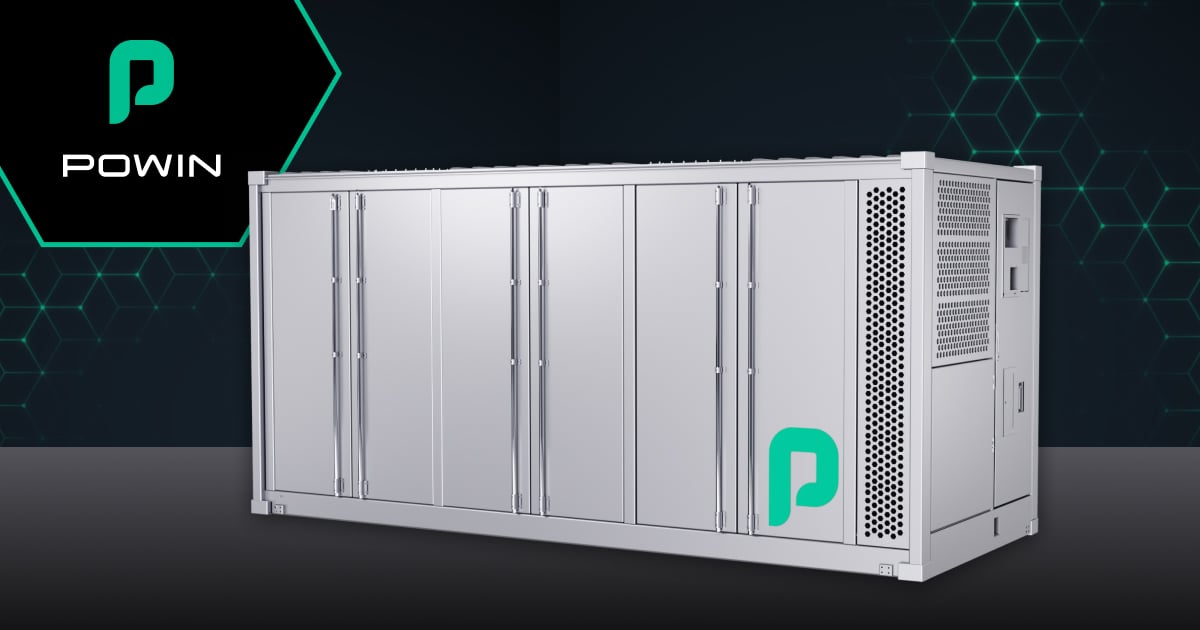
Pod fits 5MWh maximum energy capacity with 2.5MW DC power rated output into the 20-foot container enclosure.
It brings the US system integrator and manufacturer’s offering in line with recently launched products from rivals in the market in packing 5MWh into the standard footprint. Chinese manufacturers CATL and BYD have now even come to market with 6MWh+ containers.
Powin Pod is designed for use with Centipede, the company’s modular battery energy storage system (BESS) platform, which was launched in 2021. Centipede allows developers to add multiple BESS units side-by-side to create large, multiple megawatt-hour or even multiple gigawatt-hour capacities.
Previously, the Centipede platform’s compatibility was limited to Powin’s Stack750E product, which provided capacity in 750kWh increments. Integration with containerised Pods increases Centipede’s maximum capacity by 50%, the company claimed.
The new Pod is equipped with lithium iron phosphate (LFP) cells from Powin’s range of suppliers, including 320Ah cells from Rept Battero for which the US company recently signed a 12GWh supply deal.
Pod to be US-made from 2026
According to its spec sheet, the expected cycle life is 7,300 cycles at a 2-hour duration or 10,000 cycles at a 4-hour duration at 100% depth of discharge, each with 60% state of health (SOH) at the end of life. Calendar life is 20 years, and the product comes with a performance guarantee for that term with long-term service contracts available.
It includes module-level liquid-cooled thermal management and can handle ambient operating temperatures between -30°C and 60°C. The product has undergone UL9540A testing, and is certified to comply with standards, including NFPA 68 and NFPA 69 on explosion prevention and deflagration protection.
The product runs on Powin’s Stack OS software which encompasses battery management system (BMS), energy management system (EMS) and environmental controls.
Deliveries are scheduled to begin in mid-2025. The following year, units will be produced within the US, Powin said, making the Pod eligible to qualify for domestic content tax credit incentives under the US Inflation Reduction Act (IRA).
In an interview with Energy-Storage.news Premium, published in March, Powin executive VP Danny Lu said the high energy density product would enable the US company to be competitive with rival integrators from China.
According to Lu, higher energy density solutions are in greatest demand in markets where land is scarce, such as Europe and Southeast Asia. Meanwhile, some markets, including the US, “have political barriers” to software from China, which Powin, as a US company with US-designed software, would not face.
In that interview, Lu said Powin was the first company in the industry to utilise a multi-cell strategy for a large-scale system: it is integrating LFP cells from both Rept and EVE Energy in the Centipede platform at the Waratah Super Battery in Australia.
He said this approach helped derisk cell supply issues that many in the industry were facing a year or two ago.
Powin Pod has similarly been described by Powin as a “multi-cell-based hardware platform”. Further insights into the company’s strategy of procuring lithium-ion cells from multiple providers were given by a spokesperson for a news story published yesterday on ESN Premium.


